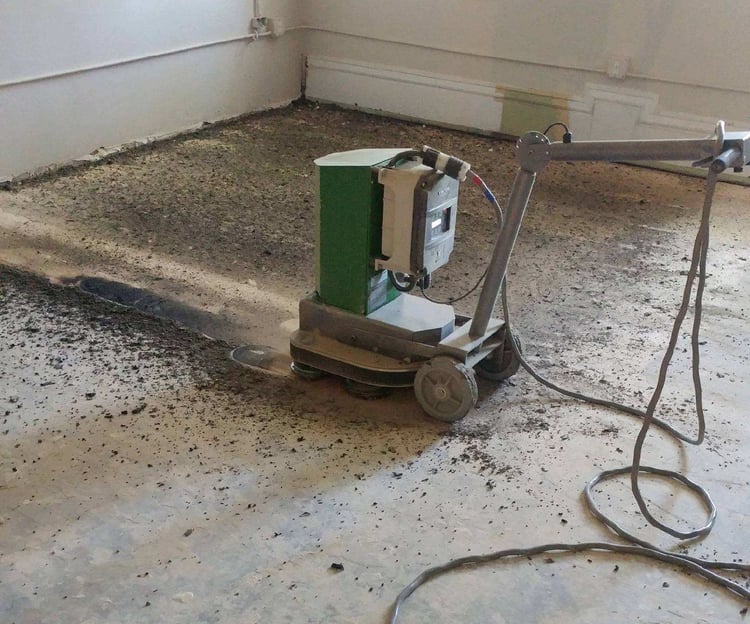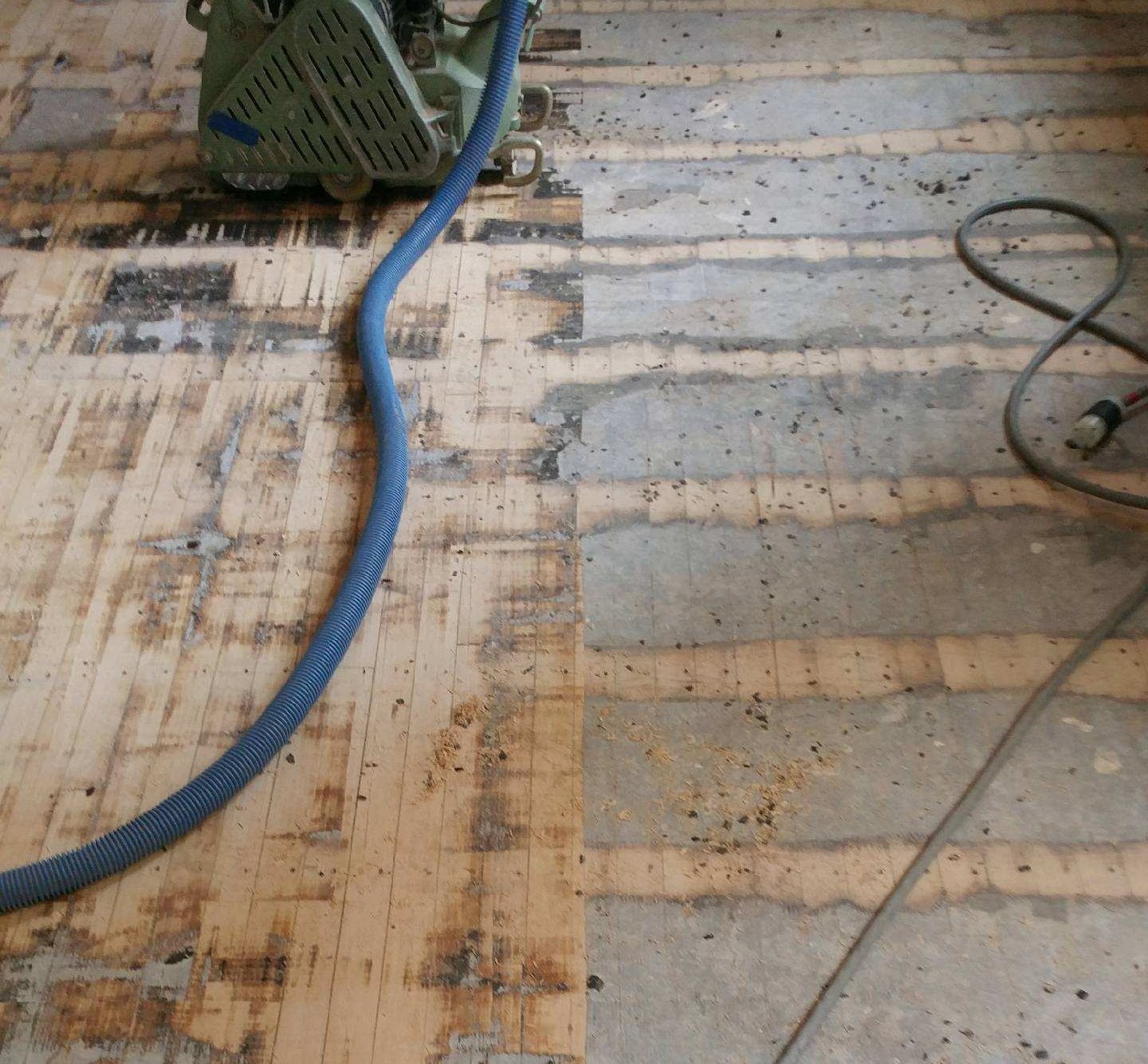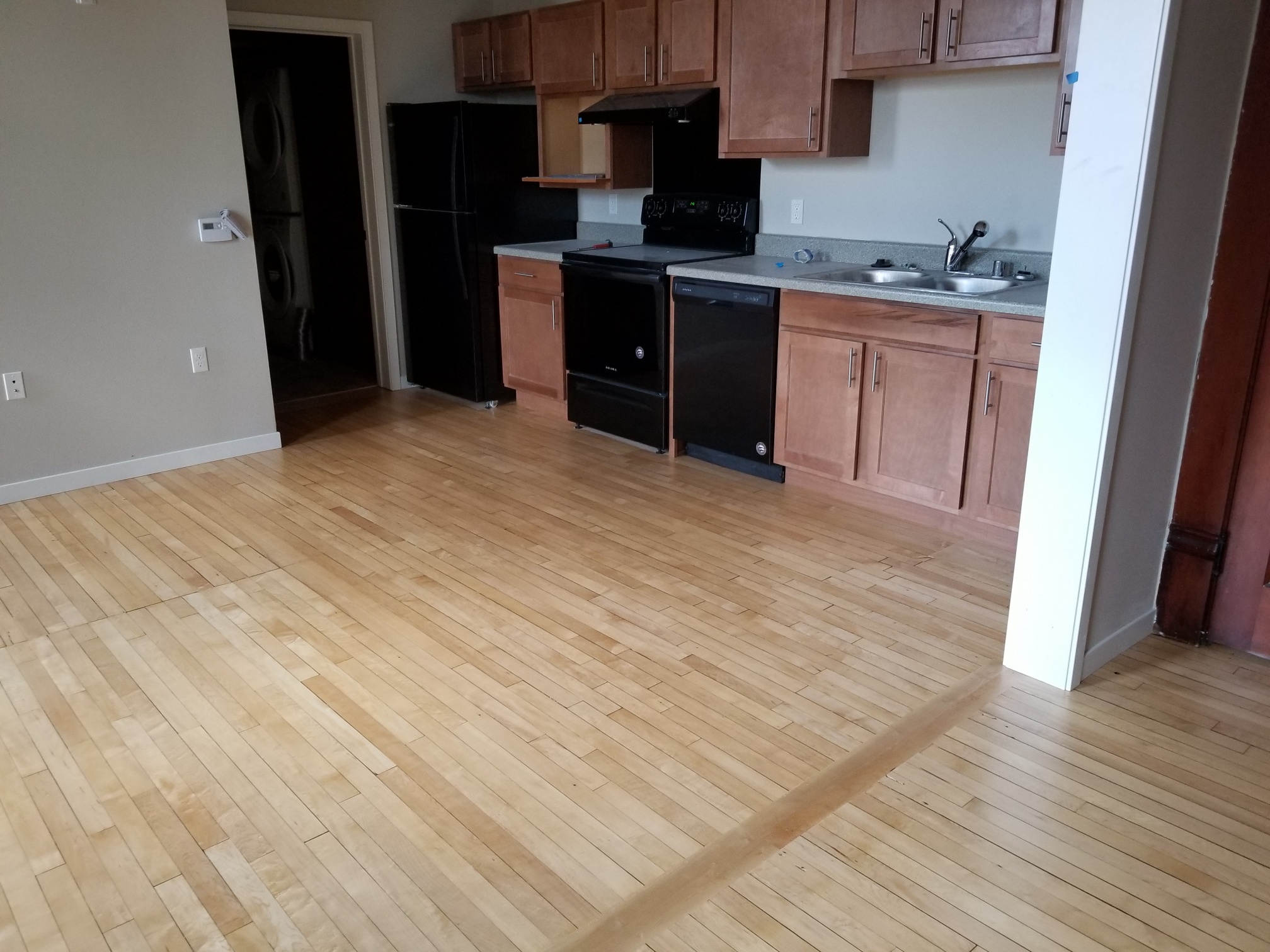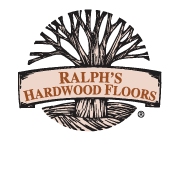Every job is special to us, but some stick in my mind because of the nature of the project and the challenges we had to overcome to get a great result.
A recent example is a project in Green Bay—the Friar House Flats, a low-income housing project funded by local and state housing authorities, with the aid of federal tax credits. The development, which is near downtown Green Bay in the Astor Park neighborhood, has 40 units available for less-than-market rent to help low-income and elderly citizens afford a home.
Twenty of those units are newly constructed, but the other 20 are in a renovated 117-year old friary that once housed Franciscan priests, brothers, and novices but was now virtually abandoned. Our task was restoring the very old and worn hardwood flooring in that friary.
The project’s developer, Commonwealth Construction, was having a hard time finding anyone to take the job. We knew it was going to be hard, but we were willing and excited to do it.
Before we started, the floors were pretty nasty. You couldn’t even tell they were wood. They were covered with tar paper we had to remove.

Then we had to sand down the wood before staining and sealing it.

It wasn’t easy, but it was fun to bring these “forgotten” floors back to life.

I’m not saying that Friar House Flats is close to being the only difficult restoration project we’ve done. In fact, only about a mile away, we recently renovated flooring in an old school house building being renovated into high-income residences.
But the history of the friary and its noble purpose gave me a particularly special feeling. I’m happy that we had the skill and experience to be a part of turning that historic, unused old building into something that can help people find a place to live in the present.















